Biography of Guru Gobind Singh (1666-1708)
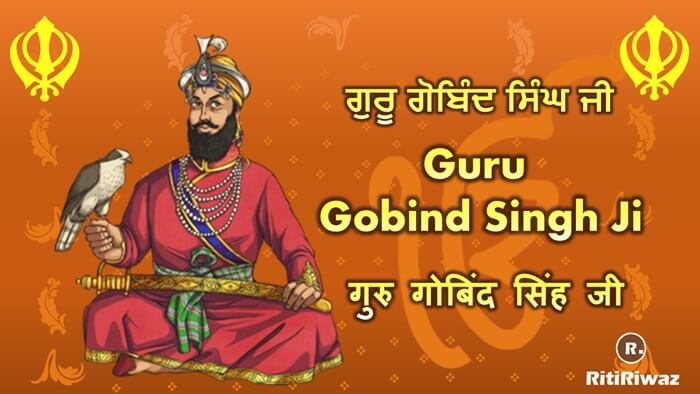
Guru Gobind Singh (1666-1708 C.E.) was the tenth and the last human Guru out of a total of 10 Sikh Gurus, he played a vital role in shaping the Sikh religion. Guru Gobind Singh strengthened the foundation of the religion through the formation of the Khalsa. He was the last Sikh Guru in the Sikh community and named the eternal living Guru as Guru Granth Sahib.
Guru Gobind Singh’s historic actions helped define the identity of Sikhs, who began wearing the 5 K’s—including unshorn hair under a turban—to represent their commitment to standing up for justice at all times. He is an exemplary role model who sacrificed everything he had so that ordinary men and women had the freedom to choose and follow the faith of their choice. He laid the foundation of a struggle initiated to free India from hundreds of years of subjugation by ruthless invaders and foreigners.
Fast Facts
- Name: Guru Gobind Singh
- Birth Name: Gobind Rai Sodhi
- Other Names: Tenth Sikh Guru, Sarbanes Dani, Mard Agamr, Dashmesh Pitah, Baj’an Wale
- Birth: 22nd December 1666
- Place of Birth: Patna, Bihar
- Father: Guru Tegh Bahadur
- Mother: Mata Gujari
- Marriage: 1677, 1684, and 1700
- Wife: Mata Jeeto, Mata Sundari, Mata Sahib Devan
- Children: Ajit Singh, Jujhar Singh, Zorawar Singh, Fateh Singh
- Death: October 7, 1708
- Death Place: Hazur Sahib Nanded, India
- Spiritual successor: Guru Granth Sahib
- Famous for: The tenth and last Guru of the Sikhs, the founder of the Khalsa Panth, completes the Guru Granth Sahib by collecting the teachings of all the Sikh Gurus, he is considered to be a unique confluence of devotion and power.
Early Life
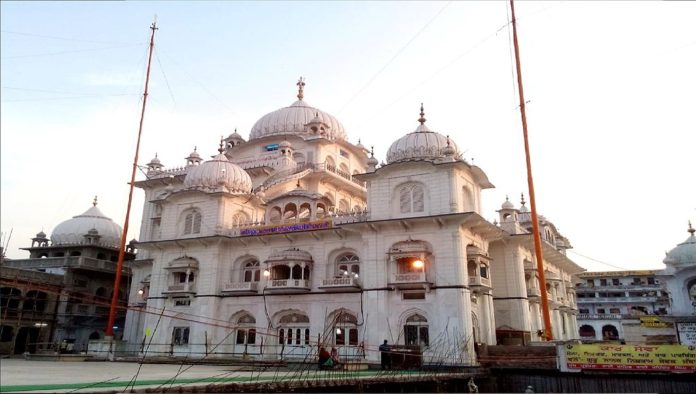
The original name of Guru Gobind Singh was Gobind Rai. He was born on 22nd December 1666 in Patna, Bihar. His father’s name was Guru Tegh Bahadur, the ninth Sikh guru and his mother’s name was Gujari Devi. At the time of his birth, his father had gone to preach religion in Bengal and Assam. The first four years of his childhood were spent in Patna. After that, his family shifted to Punjab in the year 1670.
He then moved to Chakk Nanaki in March 1672, which is situated in the lower valley of the Himalayas. There he took his education. The city of Chakk Nanaki was founded by Teg Bahadur Ji, father of Gobind Singh, which is today known as Anandpur Sahib. It was here that he received his elementary education and martial arts. After Growing up, Guru Gobind Singh followed the footsteps of his father and protected Kashmiri Hindus from the tyrannical Mughal ruler Aurangzeb. Guru Gobind Singh fought in different wars with the Mughals and their Sahyogi kingdoms for about 14 years.
At the age of only nine, Guru Gobind Singh inspired his father Guru Tegh Bahadur to protect and sacrifice for Kashmiri Hindus. Guru Gobind Singh respected people of all religions, caste and always helped them when needed. Before his death, Guru Tegh Bahadur had announced Guru Gobind Ji as his successor name. Later on March 29, 1676, Gobind Singh became the 10th Sikh Guru. While living in a camp on the banks of the river Yamuna, Guru Gobind Ji also learned martial arts, hunting, literature, and languages such as Sanskrit, Persian, Mughal, Punjabi, and Braj.
Guru Gobind Singh’s four sons are known as Sahibzadey, all four brothers lost their lives to preserve their Sikh identity in the face of ruthless Mughal invaders. Guru Gobind Singh’s two elder sons, Ajit Singh and Jujhar Singh, attained martyrdom while fighting at Chamkaur. His two younger sons Baba Zorawar Singh was aged 9 and Baba Fateh Singh was aged merely 6, both Zorawar Singh and Fateh Singh were bricked alive at Fatehgarh Sahib. Both youngsters stuck true to their faith but paid with their lives.
Guru Gobind Singh then wrote a letter (the Zafarnama) to Aurangzeb, in which he indicted the Grand Mughal with his treachery and godliness after the attack against the guru and Sikhs were called off. Aurangzeb died after he read the letter. The rightful heir of the Mughal Throne Sought the Guru’s help in winning his kingdom. Against all odds, the Guru fought several battles instigated by the Mughals and the Hill Chiefs. In the end, he was martyred by assassins sent by the Mughal Emperor.
How did Gobind Singh become the tenth Guru of Sikhs?
Guru Tegh Bahadur i.e. Gobind Singh’s father was the nine Dharma Guru of the Sikhs. When Kashmiri Pandits were being forced to forcefully accept Islam, Guru Tegh Bahadur Ji strongly opposed it and protected the Hindus. He himself refused to accept Islam. For this reason, he was beheaded by the King of India, Aurangzeb in the Chandni Chowk extension. After this incident, his son Guru Gobind Singh was appointed as the tenth Guru of the Sikhs.
Establishment of Khalsa Pant
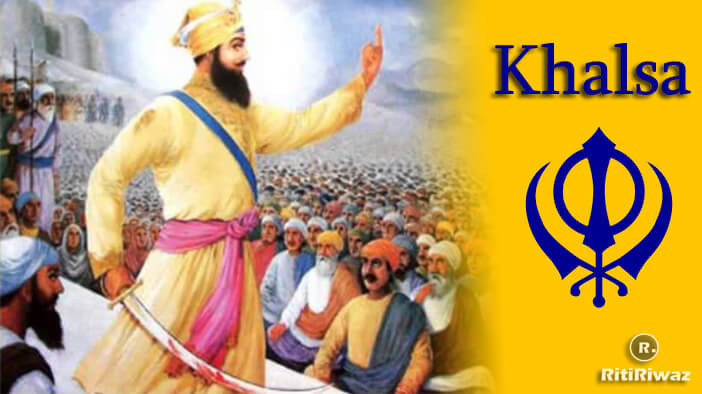
Guru Gobind Singh Ji’s leadership brought a lot of new history to the history of the Sikh community. He built Khalsa which is a collective form of Sikhism duly initiated followers on the day of Baisakhi in 1699. He gave them the spirit of Chardikala, which meant unwavering courage, spirituality, and optimism in the face of all impossible odds. Khalsa, meaning sovereign or free, was formed in order to teach the followers that no ritual or superstition is above almighty.
In a meeting of the Sikh community, he asked in front of everyone – who wants to sacrifice his head? At the same time, a volunteer agreed to this and Guru Gobind Singh took him to the tent and returned sometime later with a bloodied sword.
The Guru again asked the people of that crowd the same question again and likewise, another person agreed and went with them but when they came out of the tent, the blood-stained sword was in their hands.
Similarly, when the fifth Swayam Sevak went inside the tent with him, Guru Gobind Singh returned after some time with all the surviving servants and named him Panj Pyare.
After that Guru Gobind Ji took an iron bowl and mixed it with water and sugar and mixed it with a double-edged sword and gave it the name Amrit. After the creation of the first 5 Khalsa, he was named Chhatwan Khalsa after which he was renamed Guru Gobind Singh from Guru Gobind Rai. He explained the five significance of the word ka to the Khalsa and said – kesh, comb, kadha, kirpan, kutcha.
The word Khalsa means purity. Only a person committed to social service by the mind, word, and deed can call himself Khalsapanthi. Guru Gobind Singh founded the Khalsa Panth in the year 1699. A Khalsa speech by him-
“Waheguru Ji Da Khalsa Waheguru Ji Di Fateh”
‘5 kakara’ or ‘5 kakka’ given by Guru Gobind Singh Ji 1. Never cut your Hair (uncut hair). 2. Wearing a wood Kangha (comb) which is considered a symbol of cleanliness. 3. Wear Kara (Steel bangle) in hand. 4. Wearing pajamas or knee-length underwear (short trousers). 5. To keep the Kirpan (ceremonial sword). He also laid down four prohibitions or mandatory restrictions of the Khalsa warriors- Not to disturb the natural growth of the hairs.
- Not to eat the kutha meat of any animal.
- Not to cohabit with a person other than one’s spouse.
- Not to use tobacco, alcohol, or any type of drugs.
A Khalsa who breaks any code of conduct is no longer a Khalsa is excommunicated from the Khalsa Panth and must go and ‘pesh’ (get baptized again). Guru Gobind Singh also gave the Khalsa 52 hukams or 52 specific additional guidelines while living in Nanded in 1708.
Some of the main battles fought by Guru Gobind Singh
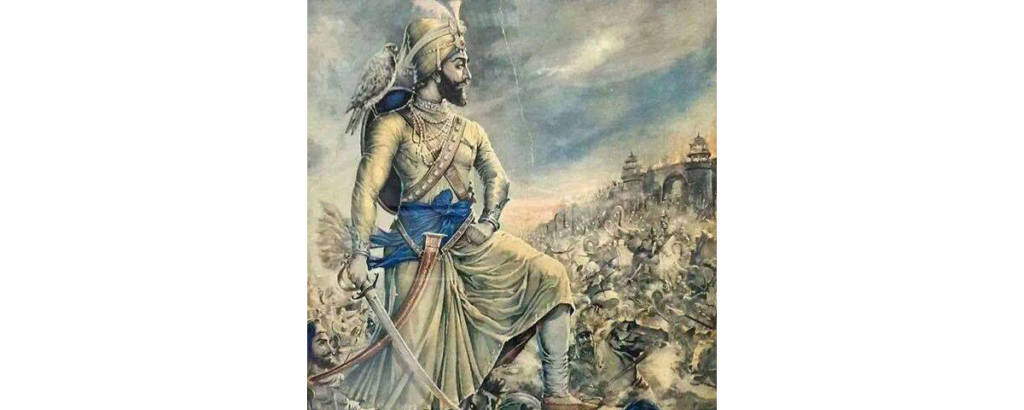
- Battle of Bhangani Battle of Bhangani (1688)
- Battle of Nadaun Battle of Nadaun (1691)
- Battle of Guler (1696)
- First Battle of Anandpur First Battle of Anandpur (1700)
- Battle of Ananspur Sahib Battle of Anandpur Sahib (1701)
- Battle of Nirmohgarh (1702)
- Battle of Basoli Battle of Basoli (1702)
- Battle of Anandpur Battle of Anandpur (1704)
- Battle of Sarsa Battle of Sarsa (1704)
- Battle of Chamkaur Battle of Chamkaur (1704)
- Battle of Muktsar Battle of Muktsar (1705)
Death
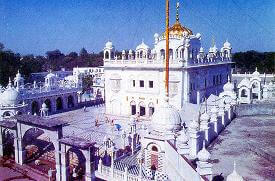
When Aurangzeb died, Bahadur Shah became the next king of India. Guru Gobind Singh also helped to get him the throne. For the same reason, their relationship was friendly. Stunned by the friendship of Bahadur Shah and Guru Gobind Singh, Nawab Wajid Khan of Sarhad had two Pathans who killed Guru Gobind Singh by deception. Guru Gobind Singh Ji breathed his last on October 7, 1708, at Nanded Sahib, Maharashtra. Gurudwara Takht Sri Hazur Sahib stands at the site where Guru Gobind Singh was cremated at Nanded. Guru Gobind Singh had a lifespan of 42 years. One of the two killers of Guru Gobind Singh was killed by his own dagger. And the other was killed by the Sikh group. His death fulled a long and bitter was of the Sikhs with the Mughals. The struggle was continued by Banda Singh Bahadur along with Baj Singh, Binod Singh, and others.
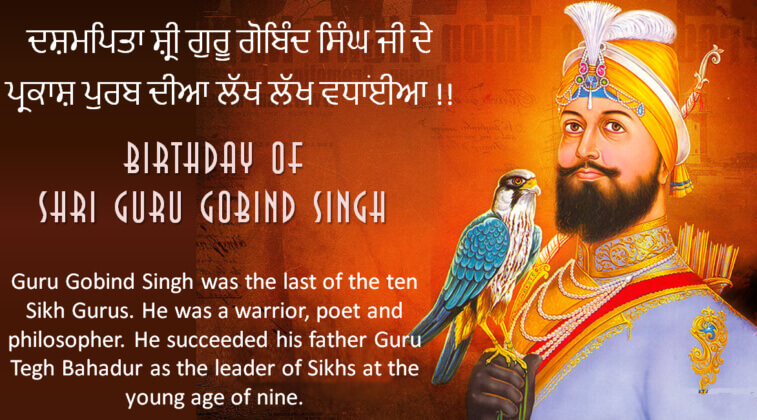
Prakash Parv (also Prakash Utsav) or the birth anniversary of Guru Gobind Singh Ji
The scriptures are known as the Dasam Granth Sahib or the ‘Scripture of the Tenth King,’ which has traditionally been attributed to Guru Gobind Singh. Guru Gobind Singh also started the tradition of applying the word Singh with the name of male Sikhs and Kaur with women belonging to the Sikh religion. Guru Gobind Singh respected people of all religions and varnas and always helped them when needed.
Guru Gobind Singh wrote poems deeply imbued with noble qualities such as inspiration, devotion, defiance, heroism, and faith in One God, the Almighty. He asked his followers to fight against evil and tyranny and to always choose the path of right action and support the righteous. Before departing from the mortal world, the Guru installed the holy Guru Granth as the permanent Guru of the Sikhs, thus ending the lineage of human Gurus.
https://www.ritiriwaz.com/20-popular-guru-gobind-singh-quotes/